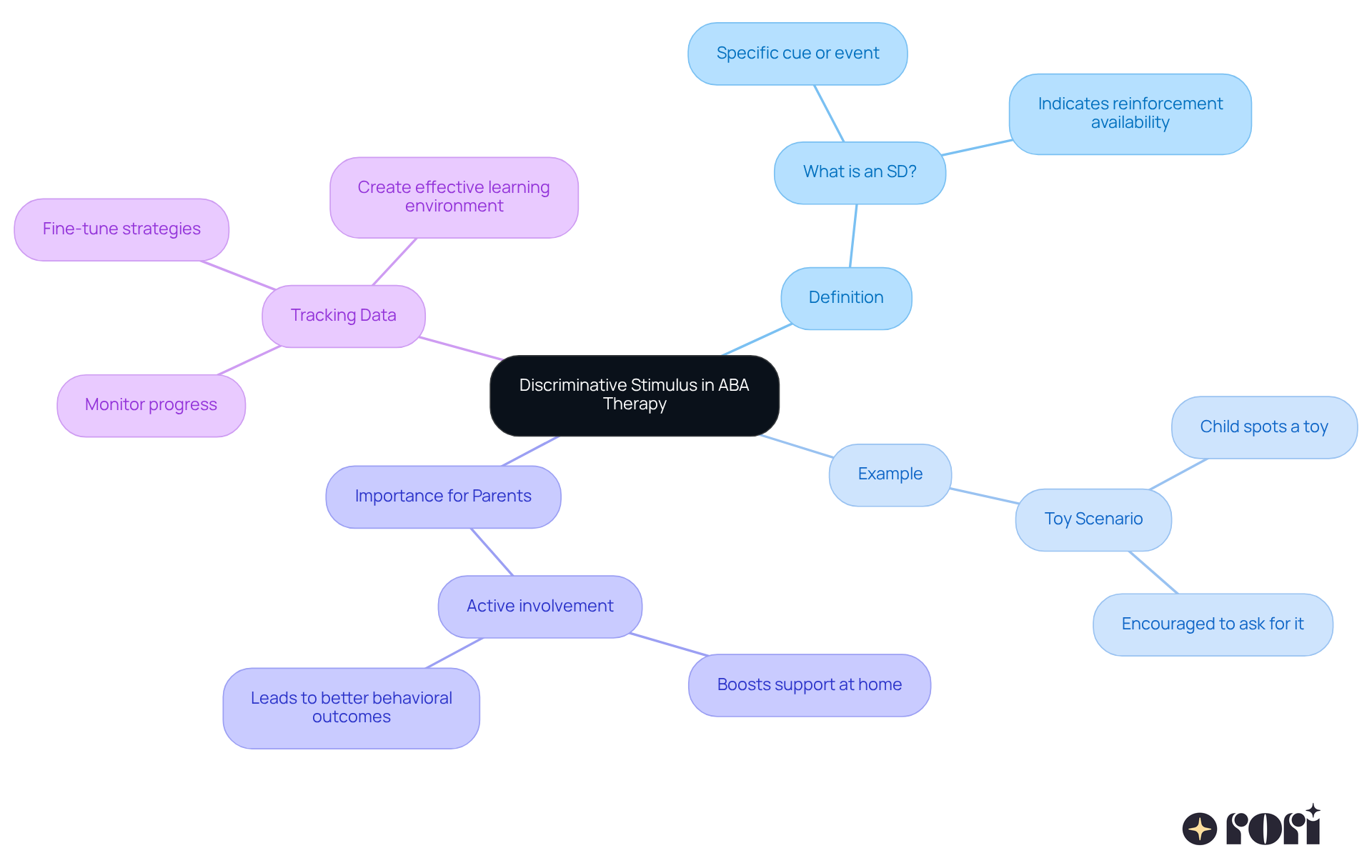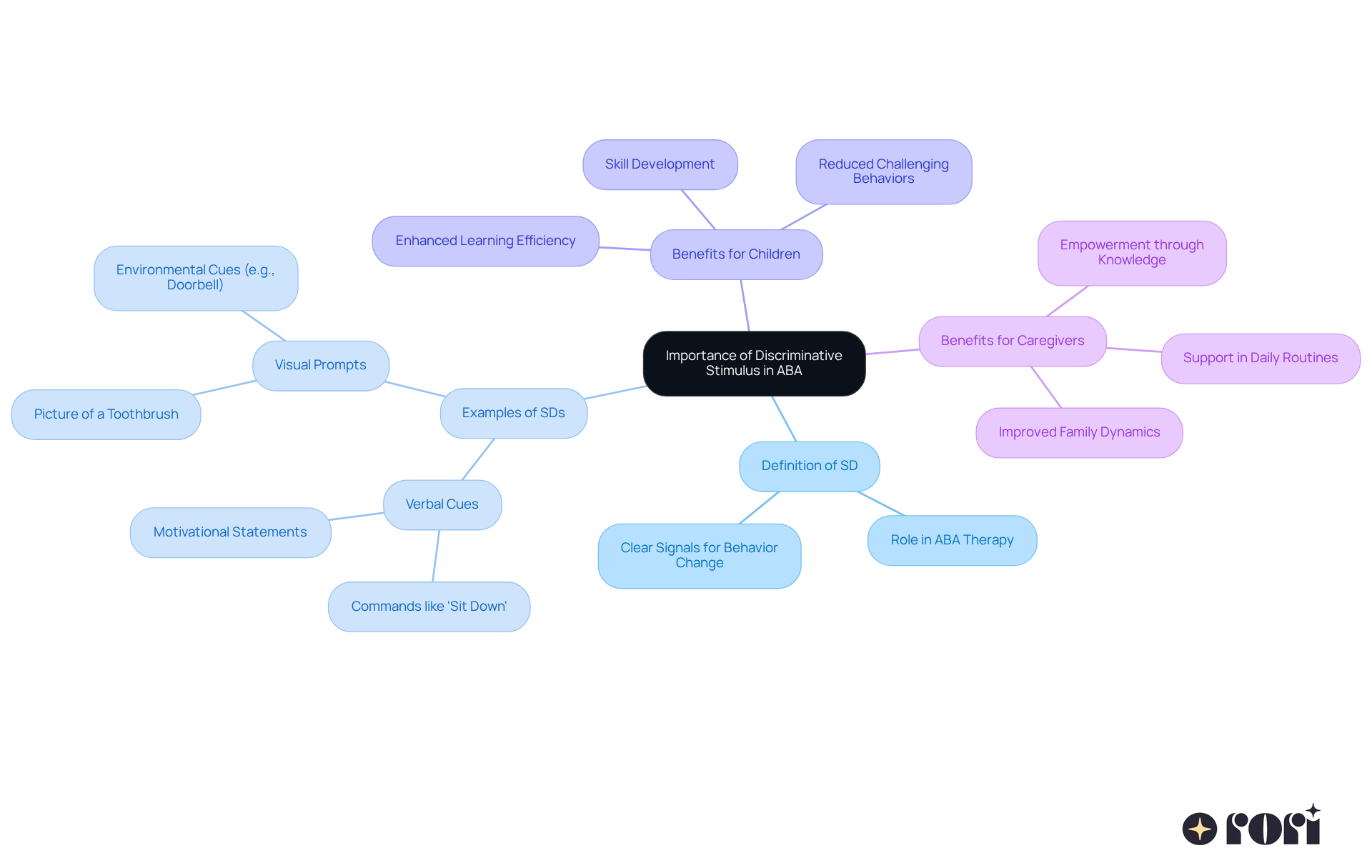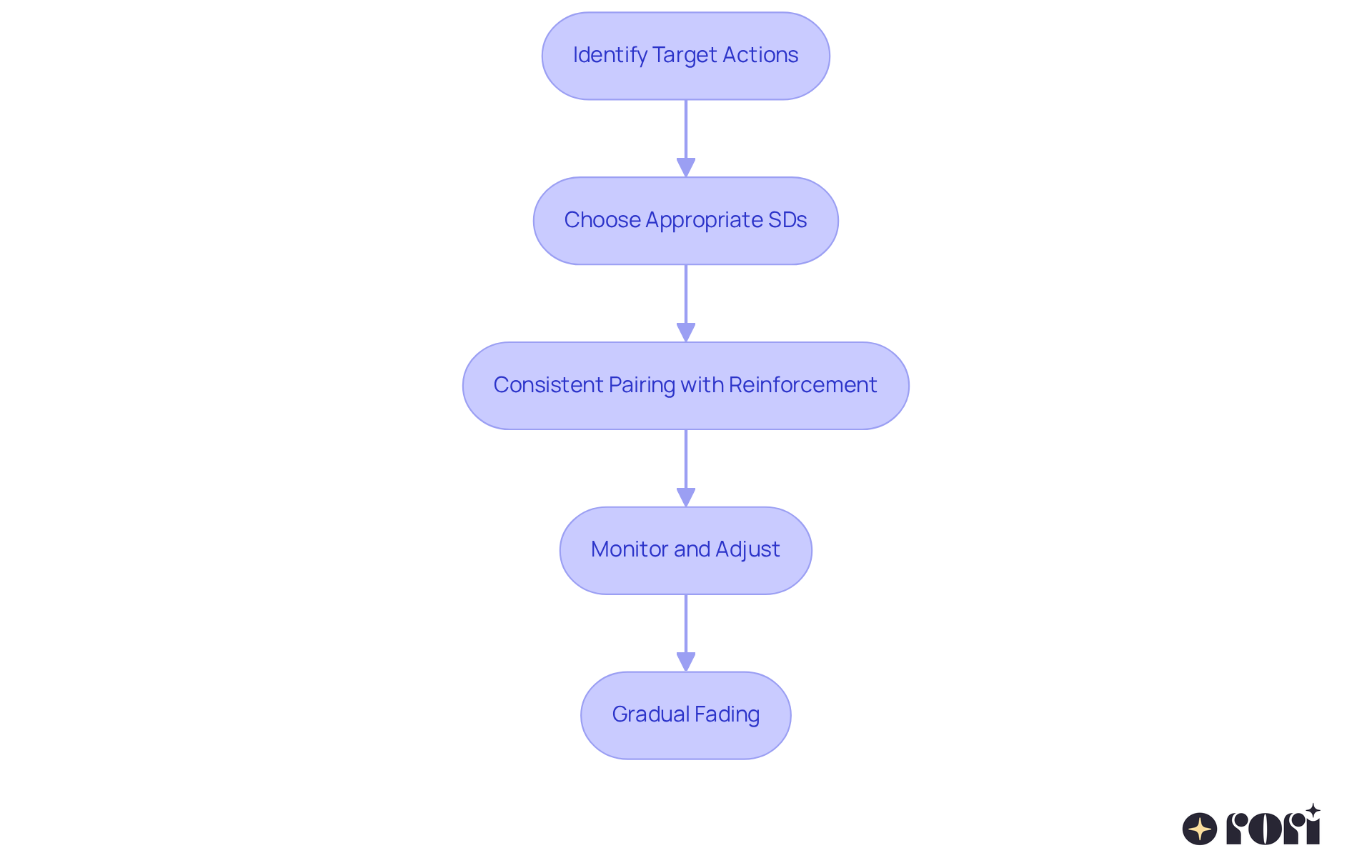In the world of Applied Behavior Analysis (ABA), 'SD' stands for discriminative stimulus. Think of it as a helpful cue that tells us when a specific behavior will be reinforced. This guidance is especially important for children, as it helps steer them towards the actions we want to encourage. 😊
It's crucial for parents to grasp the concept of SDs and to actively implement them through simple, clear steps. When parents engage in this way, it creates a nurturing environment that significantly boosts their child's learning and behavioral outcomes. By doing so, they’re not just supporting skill development; they’re fostering a space where their child can thrive. Let’s explore this together!
Understanding the intricacies of Applied Behavior Analysis (ABA) therapy can truly be a game-changer for parents looking to support their children's development. At the heart of this approach is the concept of the discriminative stimulus (SD), a crucial cue that signals when a desired behavior will be reinforced. By mastering how to implement SDs, caregivers can significantly enhance their child's learning environment, fostering independence and positive behavior.
But how can parents effectively identify and utilize these cues to maximize their child's growth and communication skills? Let’s explore this together! By diving into the world of ABA therapy, you’ll discover practical strategies that can make a real difference in your child's life.
In Applied Behavior Analysis (ABA) therapy, to define SD in ABA, a discriminative stimulus (SD) refers to a specific cue or event in the environment that indicates when reinforcement is available for a certain action. It explains that an SD tells the individual that if they perform a particular action, they’re likely to get a desired outcome or reward. For example, when a child spots a toy and is encouraged to ask for it, that toy helps to define SD in ABA, indicating that asking will lead to getting the toy.
Understanding this concept is super important for parents! It lays the groundwork for teaching and reinforcing positive behaviors in their children. By getting involved in their child’s therapy and applying ABA principles, caregivers can make informed choices that positively impact their child’s growth. This active participation not only boosts support at home but also leads to better behavioral outcomes, as caregivers feel empowered through their newfound knowledge and skills.
Plus, tracking data during therapy sessions helps caregivers monitor progress and fine-tune strategies effectively. This way, they create a more effective learning environment. Let’s explore this together and see how you can make a difference in your child’s development! 😊

In ABA therapy, it is essential to define SD in ABA as discriminative stimuli (SDs) play a crucial role by providing clear and consistent signals that encourage behavioral change. These signals help young learners understand expectations, making their educational journey more efficient and enjoyable. For example, when a child hears a verbal cue like 'sit down,' this SD signals that their action will be met with praise or a reward. This systematic approach not only supports skill development but also enhances communication and reduces challenging behaviors.
Research shows that when caregivers actively participate in ABA therapy, a remarkable 90% of individuals demonstrate significant progress. By weaving SDs into daily routines, parents can create a nurturing environment that promotes learning and growth. Think of effective examples of SDs, like using a picture of a toothbrush to encourage teeth brushing or a ringing phone to signal it's time to answer. These strategies empower parents to help their children develop essential skills, enhancing their ability to provide the right support at home.
Moreover, with a better grasp of ABA principles and strategies, caregivers can make informed choices that positively impact their children's progress. To improve learning outcomes in ABA therapy, it is important to define SD in ABA and use SDs consistently. By understanding and applying these clear signals, parents can effectively guide their children's journey toward better behavior and independence, leading to a more fulfilling life. The knowledge and skills gained through caregiver education not only alleviate stress but also enhance family dynamics, empowering caregivers in their important roles. Let’s explore this together!

To effectively implement discriminative stimuli (SDs) in ABA therapy, let’s explore some essential steps together:
Identify Target Actions: Start by defining the particular actions you want to promote in your child. For instance, if your goal is to help your little one learn to ask for a snack, that will be your target action.
Choose Appropriate SDs: Select clear and specific cues that indicate the desired actions. Visual aids, like a picture of the snack, can serve as effective SDs, or you might use verbal prompts such as asking, 'What do you want?'
Consistent Pairing with Reinforcement: It’s important to ensure that the SD is consistently paired with reinforcement. When your child responds correctly to the SD, provide immediate praise or the requested item to reinforce the behavior. This solidifies the connection between the cue and the desired action.
Monitor and Adjust: Keep an eye on your child's responses to the SDs. If they’re not responding as expected, consider adjusting the cues to make them clearer or more engaging. For example, if a verbal prompt isn't working, switching to a visual cue may yield better results.
Gradual Fading: As your child becomes more proficient in responding to the SD, gradually fade the prompts. This means decreasing the frequency or intensity of the SDs while still reinforcing the desired behavior, encouraging greater independence in your child’s responses.
By following these steps, you can effectively define sd in aba to implement discriminative stimuli in your child’s learning process, which will enhance their ability to communicate and engage with their environment. This approach not only supports skill acquisition but also fosters a deeper understanding of social interactions and personal needs. We’re here to help you every step of the way!

Understanding the role of discriminative stimuli (SDs) in Applied Behavior Analysis (ABA) is essential for parents who want to foster positive behavioral changes in their children. By recognizing that SDs serve as cues indicating when reinforcement is available, caregivers can actively support their child's learning and development. This foundational knowledge empowers parents to create an environment conducive to growth, reinforcing the importance of their involvement in the therapeutic process.
Key insights from this guide highlight the significance of clear and consistent signals in encouraging desired behaviors. By identifying target actions, selecting appropriate SDs, and pairing them with reinforcement, parents can effectively guide their children toward improved communication and independence. Plus, monitoring progress and adjusting strategies ensures that the learning process remains dynamic and responsive to the child's needs.
Ultimately, implementing effective discriminative stimuli not only enhances skill acquisition but also enriches family dynamics and alleviates stress for caregivers. By embracing these strategies, parents can play a pivotal role in their child's journey, fostering an atmosphere of support and encouragement that leads to meaningful behavioral improvements. Engaging with these principles can transform everyday interactions into powerful learning opportunities, making a lasting impact on both the child's development and the family's overall well-being. Let’s explore this together!
What is a discriminative stimulus (SD) in ABA therapy?
In ABA therapy, a discriminative stimulus (SD) is a specific cue or event in the environment that indicates when reinforcement is available for a certain action. It signals to the individual that performing a particular action is likely to result in a desired outcome or reward.
Can you give an example of a discriminative stimulus?
An example of a discriminative stimulus is when a child spots a toy and is encouraged to ask for it. The toy serves as the SD, indicating that asking for it will lead to receiving the toy.
Why is understanding discriminative stimuli important for parents?
Understanding discriminative stimuli is crucial for parents because it lays the groundwork for teaching and reinforcing positive behaviors in their children. It helps caregivers make informed choices that positively impact their child's growth.
How can caregivers participate in their child's ABA therapy?
Caregivers can participate in their child's ABA therapy by getting involved in the therapy sessions, applying ABA principles at home, and tracking data to monitor progress. This active participation can lead to better behavioral outcomes.
What is the benefit of tracking data during therapy sessions?
Tracking data during therapy sessions allows caregivers to monitor their child's progress and fine-tune strategies effectively, creating a more effective learning environment.